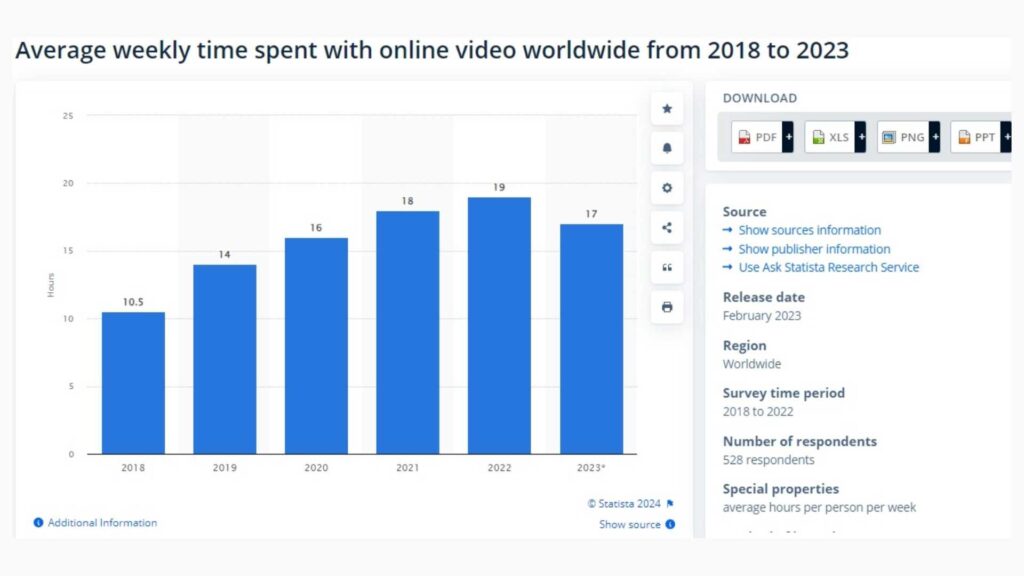MARKETING
How to Make the Most of AI Writing Tools, According to Bloggers

AI writing tools have come a long way since spellcheck.
Today, bloggers and marketers use AI writing tools to generate short and long-form copy and speed up content production.
But while AI writing software can assist in researching, outlining, and creating content, it’s not foolproof enough to cut out human writers completely.
According to bloggers, AI writing can help supplement your writing process, but you still need to remain in the driver’s seat.
Here’s what five bloggers and entrepreneurs had to say about how to use AI writing effectively, including what these tools are best for and where they fall short.
1. Break through writer’s block.
Most — if not all — writers have experienced writer’s block at some point. Getting into a creative rut can be especially challenging for bloggers who need to keep up with a demanding content calendar.
Fortunately, AI writing tools can help you overcome this “blank page syndrome.”
“Using AI writing tools helped us with eliminating writer’s block,” said Ruggero Loda, the owner of RunningShoesGuru.com, a blog that attracts more than 200,000 visitors each month.
“As a blog owner, creating blog posts is the utmost priority to me. But time and time again, [my] writers come across writer’s block, where they are unable to produce any new content.”
According to Loda, his team members often turn to AI tools to spark their creativity.
Loda told me, “AI writing tools have come to the rescue,” he said. “Even though the tools won’t write everything for you, they create content according to your instructions, and from there you can start getting new ideas.”
Daniel Martin, digital marketer and co-founder of LinkDoctor LLC, shared a similar experience.
“As we are an organization dealing with SEO-based digital marketing, we work with a content team,” said Martin. “Earlier, the team was struggling to keep pace with the blog writing. Once we made use of the AI tools, we were mind-blown, and the tools have helped the writers deal with writer’s block.”
While an AI tool can’t typically produce an entire blog post for you, it can get the ball rolling on your draft. Instead of staring at a blank page, you’ll have a sample to use as your starting point.
2. Whip up an outline fast.
AI writing tools can also help you write an outline quickly, which you can then use to produce a draft or outsource to another writer to finish the article.
“Leverage the outline feature of AI writing tools,” suggested Loda. “An AI writing tool can certainly help you with generating an outline based upon its collective data. Most often these outlines are good enough to start producing content.”
This outlining capability can be especially useful if you’re having trouble organizing your thoughts. It can streamline the writing process and give you a clear roadmap of how to move forward.
According to entrepreneur, content writer, and founder of Rephrase Media Matthew Ramirez, AI writing tools are most useful during this outlining stage of the writing process.
“In my experience, [one of] the best places to use an AI writing tool is in the ideation phase,” Ramirez said. “One of the most time-consuming parts of creating content is getting started, organizing outlines, and putting together a first draft. By using an AI tool that can help you elaborate your ideas and fill in details, you can greatly expedite your content writing.”
In fact, Ramirez says that using AI writing tools to outline his blog posts and expand on his ideas has helped him cut down on 80% to 90% of content creation time.
3. Make your instructions crystal clear.
The quality of what an AI tool puts out will directly correlate with what you put in. That’s why Loda encourages writers to be intentional with their instructions.
“Make your instructions very clear,” he said. “No matter what type of content you’re about to create, you can provide clarity to such tools by letting [the AI] know how your content should sound, what its tone should be, the agenda of your article, and much more.”
According to Loda, AI writing tools today let you specify a great number of inputs before generating your content.
“I was amazed to see such a variety of options that I could give out as my content descriptions,” he said. “Once I gave the best input, the tools provided me with the best output.”
Using an AI writing tool is a two-way street. It might take some practice, but as you get better at providing clear instructions, the tool can get better at producing high-quality content.
4. Don’t skip the research stage.
Along with generating full-form sentences and paragraphs, some AI writing tools can provide facts and figures they pull from the internet.
But Harriet Chan, co-founder and marketing director of CocoFinder —who has used AI writing tools to create blog posts and guest posts — cautions writers against relying too heavily on AI-gathered information.
“My advice for anyone looking to get the most out of their AI writing tool is not to skip the actual research part that goes into traditional writing,” said Chan.
“An AI tool will aggregate a lot of information fast, but will easily lose out on the human touch that each piece of writing should have to make it tick.”
Loda seconds these words of caution, saying that AI tools can produce inaccurate copy.
“AI writing tools can provide false data,” he said. “No matter how good of an AI tool you’re using, it is not human. With AI writing tools I have noticed that they collect data from old sources on the internet and without fact-checking that data they write content around it. Hence as a user, you should keep an eye on each sentence.”
That said, Alina Clark, co-founder of software development business CocoDoc — who has been using AI writing tools to supplement her business blog writing for two years — said that AI research capabilities have been a huge timesaver.
“I’ve used AI writing tools as fishing hooks to find out content on the internet,” said Clark. “AI writing tools have an advantage in the sense that they can read through a lot of content on the internet within a short time. Using an AI writing tool for content research shortens the research time, which means that I can create quality content faster.”
While AI can accelerate the research phase of the writing process, don’t neglect doing your own research, too. Make sure to supplement the tool’s findings with your own work to ensure everything is accurate and up-to-date.
5. Edit and proofread everything.
Not only can AI writing tools present outdated information, but they might also produce writing that doesn’t make sense or fit your brand voice. Because of this, it’s crucial to edit and proofread everything before you hit publish.
“One mistake to avoid with such tools is to assume that the output does not need to be reviewed before publication,” said Ramirez. “Doing so is very risky, since there might be something inappropriate or irrelevant in what the tool outputs.”
Chan agrees that while AI writing can be a useful supplement, you can’t rely on it for your complete writing process from start to finish.
“At all times, avoid relying entirely on the AI tool to do the whole writing bit for you,” she said. “Your brand will only stand out if the unique touch that attracted people to it in the first place remains all through it. An AI tool may show stark differences when it comes to making this possible.”
6. Remember your readers.
Finally, it’s crucial to remember your readers anytime you publish a piece of content on your blog, social media, or another channel. You can ensure that your content meets your readers’ needs far better than an AI tool can.
“One of the most important and common mistakes that can be avoided is having the whole content copy-pasted from the AI tool without thinking about the reader’s perspective,” said Martin. “Have practical experience, and write for the readers.”
Not only will this reader-first approach improve the quality of your blog posts, but it will also prevent Google from penalizing your blog for using machine writing.
“Most of the AI tools use GPT-3 [a language prediction model],” said Martin. “There is a chance the article will get penalized as Google aims to provide usefulness to the readers.”
AI Writing Tools Worth Checking Out
There are a variety of AI writing tools available today. Here are a few worth checking out:
- Jarvis: This AI-powered software uses machine learning and natural language processing to generate blog posts, landing pages, social media copy, and other types of content. Not only does it create original content, according to the company, but it also supports over 25 languages. That said, this writing assistant can sometimes repeat phrases or produce irrelevant content that needs human editing. Jarvis offers a 10,000-word free trial, as well as a starter plan that starts at $29/month and a Boss Mode plan (for long-form content) that starts at $59/month.
- Articoolo: This AI text generator offers a plugin to help you write blog posts directly in WordPress. It can help you speed up article writing and summarization, but it might not be the best pick for non-Wordpress users. Articoolo offers both fixed and monthly plans, including a fixed plan of 10 articles for $19 and a monthly plan that includes 30 articles for $29.
- AI Writer: This tool claims it can speed up content creation by 50% with its automatic content writing and article rewording features. While this tool can help augment your writing process, you’ll still need to edit any content it produces. AI Writer’s basic plan starts at $29/month and its standard plan starts at $59/month.
- Grammarly: Grammarly uses advanced AI to check your writing for spelling and grammar mistakes. It’s more advanced than basic spellcheck apps, as it can point out issues like passive voice or a lack of variety in sentence structure. Its premium plan can also check documents for plagiarism. You can use Grammarly’s proofreading tool for free or upgrade to one of its premium plans starting at $12/month.
Although AI tools are becoming increasingly sophisticated, they can’t replace human writers entirely. Not only is this surely a relief for bloggers and journalists, but it also means that an AI writing tool will only be as effective as the person using it.
As long as you continue to follow best practices for writing blog posts and other copy — and edit any AI-generated content before you publish it — you can enjoy the benefits of AI writing tools while avoiding the common pitfalls that come with them.
Source link
MARKETING
Quiet Quitting vs. Setting Healthy Boundaries: Where’s The Line?

MARKETING
Microsoft unveils a new small language model

Phi-3-Mini is the first in a family of small language models Microsoft plans to release over the coming weeks. Phi-3-Small and Phi-3-Medium are in the works. In contrast to large language models like OpenAI’s ChatGPT and Google’s Gemini, small language models are trained on much smaller datasets and are said to be much more affordable for users.
We are excited to introduce Phi-3, a family of open AI models developed by Microsoft. Phi-3 models are the most capable and cost-effective small language models (SLMs) available, outperforming models of the same size and next size up across a variety of language, reasoning, coding and math benchmarks.
What are they for? For one thing, the reduced size of this language model may make it suitable to run locally, for example as an app on a smartphone. Something the size of ChatGPT lives in the cloud and requires an internet connection for access.
While ChatGPT is said to have over a trillion parameters, Phi-3-Mini has only 3.8 billion. Sanjeev Bora, who works with genAI in the healthcare space, writes: “The number of parameters in a model usually dictates its size and complexity. Larger models with more parameters are generally more capable but come at the cost of increased computational requirements. The choice of size often depends on the specific problem being addressed.”
Phi-3-Mini was trained on a relatively small dataset of 3.3 trillion tokens — instances of human language expressed numerically. But that’s still a lot of tokens.
Why we care. While it is generally reported, and confirmed by Microsoft, that these SLMs will be much more affordable than the big LLMs, it’s hard to find exact details on the pricing. Nevertheless, taking the promise at face-value, one can imagine a democratization of genAI, making it available to very small businesses and sole proprietors.
We need to see what these models can do in practice, but it’s plausible that use cases like writing a marketing newsletter, coming up with email subject lines or drafting social media posts just don’t require the gigantic power of a LLM.
Dig deeper: How a non-profit farmers market is leveraging AI
MARKETING
Navigating the Video Marketing Maze: Short-Form vs. Long-Form


Are you torn between using long-form or short-form videos for your small business marketing campaign? Well, you are not alone. Despite 89% of consumers wanting to see more brand videos, there is no one-size-fits-all answer about the ideal video length.
However, this should not deter you from creating an effective video strategy. In 2023, people watched an average of 17 videos per day, highlighting the influence of video content in today’s digital landscape.


Both short-form and long-form videos offer unique advantages and come with their set of challenges. Join me as I uncover the benefits and limitations of each video format to help you make informed marketing decisions.
What are Short-Form Videos?
Short videos typically range from 30 seconds to less than 10 minutes long. They are popular on social media platforms like TikTok, Instagram, Snapchat, and YouTube.
Short-form videos deliver brief yet engaging messages that quickly capture the viewer’s attention. Here are some popular types of short-form video content.
- TikTok Challenges
- Instagram Reels
- Snapchat Stories
- YouTube Shorts
- Twitter Video Ads
Benefits of Short-Form Videos
A previously cited report shows that 39% of marketers find short-form videos, ranging from 30-60 seconds long, more successful. The same study reports that 44% of customers prefer watching a short video to learn about a brand’s offerings.


So, it is evident that short-form videos have their benefits. Let’s take a closer look at some of them.
Attention-Grabbing
Short-form videos capture attention quickly, making them ideal for the fast-scrolling nature of social media platforms. Your audience is more likely to watch them in their entirety compared to longer content.
Cost-Effective Production
Creating short-form videos requires less time and resources compared to longer videos. As a small business owner with a limited budget, using short-form videos can be cost-effective.
Increased Engagement
Short-form videos engage viewers due to their crisp and concise nature. This results in more likes, comments, and shares that boost your content’s visibility and increase brand awareness.
Integrating short-form videos into your influencer marketing campaigns can further amplify your reach to new and diverse audiences.
Highly Shareable
Short videos are highly shareable. This makes it more likely for your viewers to share them, increasing their virality.


Want to get certified in Content Marketing?
Leverage the tools and channels to predictably and profitably drive awareness, leads, sales, and referrals—EVERYTHING you need to know to become a true master of digital marketing. Click Here
There are multiple benefits of adding video to your website including increased engagement, improved SEO, and enhanced user experience.
Limitations of Short-Form Videos
While short-form videos offer many advantages in content marketing, they also present some challenges.
Limited Message Depth
Due to their brief duration, short-form videos may struggle to convey complex or detailed messages. Longer videos might be more suitable if you need to communicate intricate information.
Competition for Attention
Standing out on platforms flooded with short-form video content can be challenging. You must create content that stands out to avoid becoming lost in the sea of other videos.
Shorter Lifespan
Short videos may lose their relevance with time. They can quickly get buried in users’ feeds, leading to a shorter visibility and engagement period than longer, evergreen content.
This means you must consistently create short-form videos to maintain audience interest over time.
Limited SEO Impact
Short-form videos may be more challenging to optimize for search engines than longer, more keyword-rich content. This can affect the discoverability of your content outside the social media scene.
What are Long-Form Videos?
Long-form videos are typically longer, ranging from a few minutes to several hours. They extend beyond a few minutes to several hours, providing ample time for in-depth topic exploration and detailed content.
These videos are particularly suitable for educational content, product demonstrations, and narrative-driven storytelling. Long-form videos are common on platforms like YouTube and Vimeo. Common types of long-form video content include:
- YouTube Series
- Webinars
- Educational Tutorials and Courses:
- Behind-the-Scenes Content
- Interviews and Conversations
Advantages of Long-Form Videos
Long-form video content is the fastest-growing segment, with videos above 30 minutes experiencing tremendous growth over the years. Let’s explore some of the benefits behind this growth.


Establishes Expertise and Credibility
Long-form videos allow you to provide in-depth information about various subjects, establishing your brand as an authority. Potential customers will likely trust and rely on your insights when you consistently deliver valuable content.
Builds Strong Audience Connections
The more your audience watches your videos, the more they become familiar with your content and brand. This consistent engagement promotes trust and loyalty, helping you create deeper connections with your audience.
Provide SEO Optimization Opportunities
Long-form videos keep your audience engaged for a longer duration than short ones. This signals search engines that your content provides value, resulting in higher rankings and increased visibility.
Besides, these videos provide opportunities to optimize for relevant keywords. This Attrock guide offers more insights into the value of SEO for your small business.
They Are Sustainable
Unlike short videos, well-produced and valuable long-form videos have an extended shelf life. They can continue to attract views and engagement over an extended period, contributing to a sustainable content strategy.
Instagram reels are also a part of short videos and you can get benefits from this platform by integrating it with your website. You can learn how to embed Instagram Reels on websites and get extra benefits from your Reels.
Drawbacks of Long-Form Videos
Despite their benefits, long-form videos also have certain limitations, including:
Attention Span Challenges
Between distractions, juggling tasks, and information overload, user attention span quickly diminishes. Viewers may lose interest and disengage from your long video before its conclusion.


Are You Ready to Master Social Media?
Become a Certified Social Media Specialist and learn the newest strategies (by social platform) to draw organic traffic to your social media sites.
Complex Production Process
Creating high-quality long-form videos requires more resources, including time, equipment, and skilled personnel. This can be disadvantageous, especially for small businesses with limited budgets.
Platform Limitations
Some social media platforms and video hosting sites may limit video length, making it challenging to distribute long-form video content. You may then be forced to repurpose your content to suit various platforms.
Short-Form or Long-Form Videos: Which Are Better?
Now that you know the benefits and limitations of each format, which one should you choose? Short-form or long-form videos?
Well, it all boils down to considering several factors, such as:
Content Objectives
What do you want to achieve from your video marketing campaign? Short-form videos are highly effective for quick brand exposure and generating buzz. Long-form videos, on the other hand, contribute to a more in-depth understanding of the brand.
Target Audience Preferences
Audiences with short attention spans likely prefer short-form videos, while long-form videos appeal to those seeking a more immersive experience.
Similarly, short-form videos may appeal more to younger audiences, while older demographics may prefer the depth of long-form content.
Platform Dynamics
Various platforms support different content formats. Short-form videos are well-suited for platforms like TikTok, Instagram, and Snapchat. On the other hand, platforms like YouTube and Vimeo are better for hosting longer videos.
Industry Type
Short-form videos would be ideal if your industry thrives on trends, entertainment, and quick messages. However, long-form videos are effective for industries requiring in-depth explanations or educational content.
Bottom Line
Ultimately, choosing short-form or long-form videos depends on your business’s specific needs and goals. Since both formats have advantages and limitations, making a choice may prove difficult.
However, it doesn’t have to be an uphill task. The key lies in recognizing when to incorporate each video format into your marketing strategy. Understanding your audience and its needs allows you to combine both formats strategically, maximizing the benefits of each.
Continuously analyze performance metrics and adapt your video marketing strategy accordingly to ensure optimal engagement and conversion rates.
-

 MARKETING6 days ago
MARKETING6 days agoEffective Communication in Business as a Crisis Management Strategy
-

 SEARCHENGINES7 days ago
SEARCHENGINES7 days agoGoogle Won’t Change The 301 Signals For Ranking & SEO
-

 SEO6 days ago
SEO6 days agobrightonSEO Live Blog
-

 PPC7 days ago
PPC7 days ago9 Ecommerce Trends to Boost Your Business in 2024
-

 SEO4 days ago
SEO4 days agoGoogle March 2024 Core Update Officially Completed A Week Ago
-

 SEO7 days ago
SEO7 days agoHow To Write ChatGPT Prompts To Get The Best Results
-

 WORDPRESS5 days ago
WORDPRESS5 days ago9 Best WooCommerce Multi Vendor Plugins (Compared)
-
SEARCHENGINES6 days ago
Daily Search Forum Recap: April 25, 2024


















You must be logged in to post a comment Login